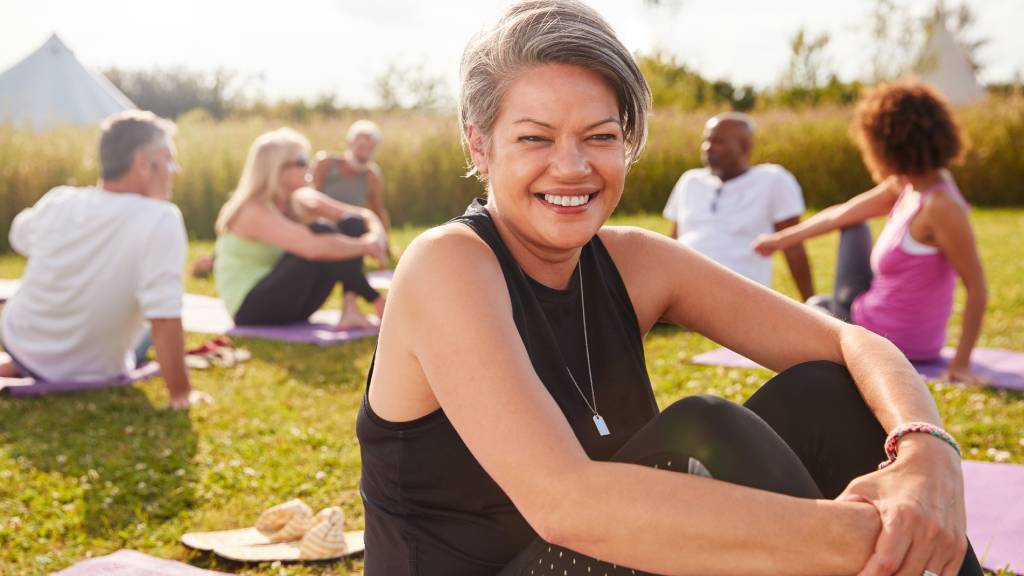Exercises to stay healthy at any age

As a child, exercise is nothing but play. As a young adult, endless energy makes exercise nothing but fun. But as an adult, exercise can be a battle of old injuries, priorities, and tiredness. Despite the challenges, physical exercise must always be a priority.
Being physically inactive increases your risk of heart disease and stroke by as much as 50%, and without regular activity, you can slowly lose your strength, stamina, and overall health and wellbeing. The good news is that it doesn’t take much to significantly improve health – just 30 minutes of moderate activity per day is enough to help reduce your risk of heart disease.
And just because burpees may be out of the question doesn’t mean that ability-appropriate exercise isn’t helpful. Some level of exercise can be beneficial in reducing stress and keeping you mentally and physically well, especially during difficult times when you need it the most.
Exercise offers some protection from conditions such as type 2 diabetes, heart disease, and even some cancers. Even without considering those big scary words, exercise can resist fat accumulation and muscle loss as an adult, helping you to look and feel better every day.
So what kinds of activity, and how much of it, should you be doing with age?
Exercise in your 50s
Your 50s is the time to maintain the strength and fitness from your younger years, and get into good exercise habits for the years to come. It can also be a good time to try new types of exercise that will be kinder on old injuries and new aches, so don’t be afraid to take this time to experiment with different workout groups and activities.
To maintain muscle strength, aim for two bouts of strength training per week. This can be anything from a one-on-one with a personal trainer to a workout at your at-home gym, to a sport that tests your strength such as swimming.
Cardio exercise such as walking is also an easy way to include fitness into your day. As a weight-bearing exercise, it helps to keep your body strong while improving heart health.
For something a little different, consider taking up an exercise such as tai chi. Tai chi is a dynamic exercise that is known as ‘meditation in motion’. It can improve your balance and help you to de-stress as it relaxes the mind and gently provides strength and fitness.
Government recommendations for exercise in your 50s is to spend 30 minutes per day getting active five days per week.
Exercise in your 60s
In your 60s, it can feel tougher to exercise, but it’s more important than ever. The trick is to make it a habit, and rain or shine, fit exercise into your day most days of the week.
To start, continue the strength and resistance exercises twice per week. This doesn’t mean lifting weights in the gym, but it can mean exercise that’s gentler on the joints and still a challenge for the muscles, such as yoga or even walking with small weights.
As well as exercise that maintains muscle strength, incorporate any kind of exercise that maintains cardio health. A brisk walk that leaves you feeling puffed is excellent, or you can babysit the grandkids and quickly wear yourself out running around after them!
And if exercise starts to feel like a chore, make it fun, and make the most of available discounts. Ski fields around the country offer discounted tickets and passes for those aged 65 and over, dance classes are a great way to exercise without realising you’re working out, and getting into birding can get you exploring outdoors and meeting new people as you discover our country’s beautiful birdlife.
Exercise in your 70s and beyond
When you hit your 70s, exercise is all about maintaining your strength and wellbeing to avoid falls and keep the mind sharp as a tack. At this stage, it’s about doing what you can manage and avoiding a sedentary lifestyle – some 70-somethings will invest in a stationary bicycle at home, while others will join a walking group. It’s all about what’s right for your body.
Exercise that’s gentle on the joints is usually best, which is why aqua-aerobics and the use of elliptical machines are popular during retirement years.
General guidelines at this age suggest three flexibility and balance sessions per week, and two sessions of muscle-strengthening activities per week.
Exercise at every age
Every body (space intentional!) is different, which is why no piece of exercise advice will be suitable for every single person. Before getting started on a new exercise regime, be sure to speak to your doctor or a sports therapist to ensure you’re keeping your body safe and doing more good than harm.
If you’re new to exercise or haven’t worked out in a while, be sure to start slowly and give your body rest days rather than pushing too hard and injuring yourself. Exercise should be a healthy habit for life, not a flash in the pan - so take it slow, find exercise and movement that you enjoy, and feel the benefits for years to come.
Just as regular exercise is about looking out for yourself, New Zealand Seniors is about looking out for your loved ones.
20 Oct 2020